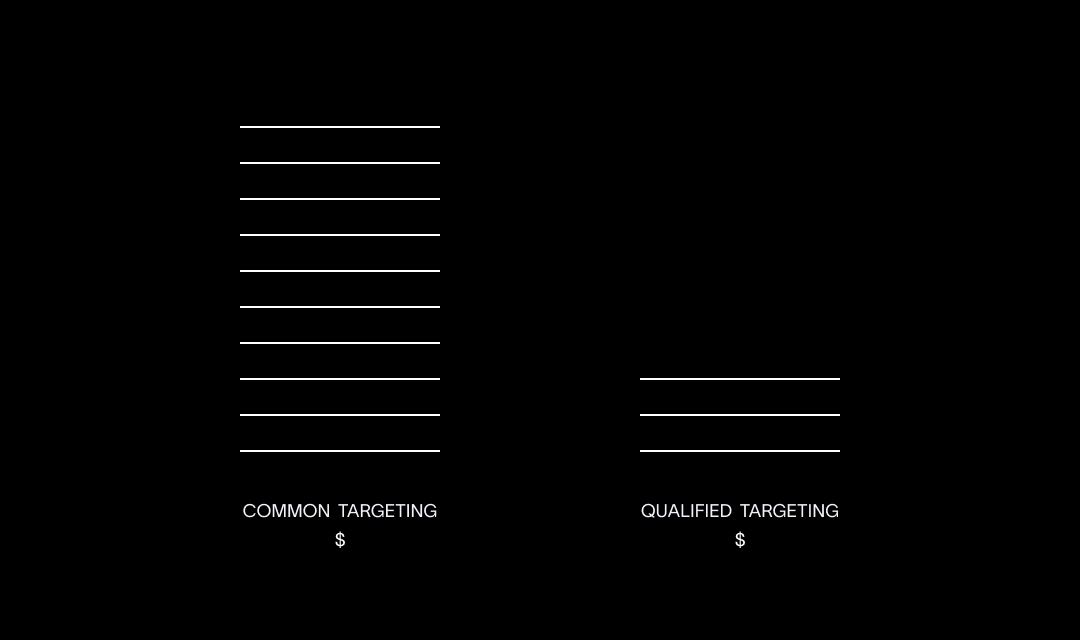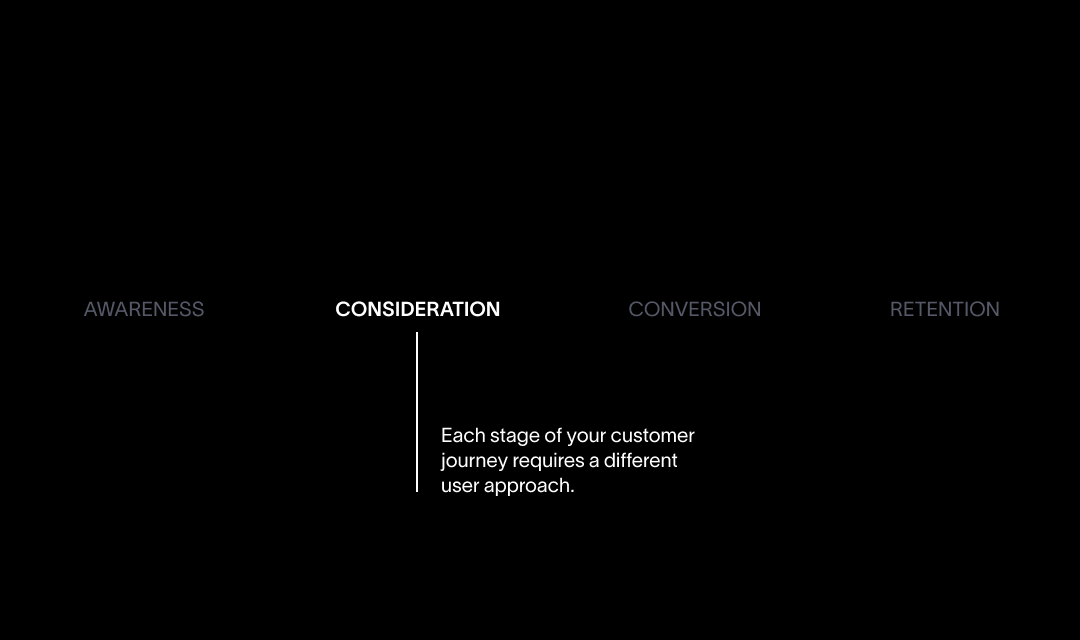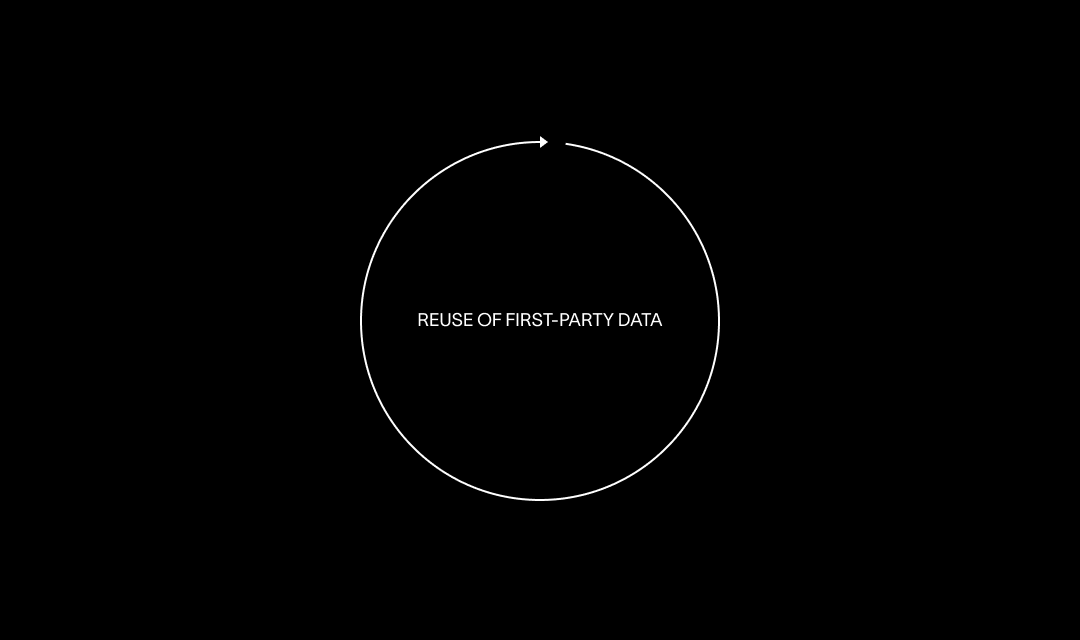Performance Marketing
High Intent Leads through Precise Targeting
Published February 2022

A dart pin in the bulls-eye as a metaphor for precision
No marketer wants to spend all of their budget and time on someone who is not interested. But that's the reality for many marketers today. It’s a hard time targeting the right audience, especially when there is so much competitive noise in the marketplace—particularly for B2B marketers.
Businesses with successful campaigns tend to exceed customer expectations with customer-centric experiences, and that starts with an understanding of their audiences. To build an effective target audience, you must first identify the different segments of people who you can potentially reach and determine who the high-value customers are. Because if your leads aren't high-intent, they won't make it far through the sales process. And that doesn't add any value to your business, right?
To get high-intent leads, you need to pre-qualify. This starts with the initial targeting, requires continuous optimizations, and goes through all stages of your funnel. If you do it right, you can reduce your advertising costs or you can let your campaign run longer and get more leads—either way, you’ll increase your ROAS.
Of course, no two companies are the same. A B2B SaaS company has very different targeting challenges than a company like Netflix, whose audience is so large that you have to seriously consider who you're not targeting.
- Editor's Info
- You'll find our used sources at the end of each section.
- Any questions or feedback? Contact us
Why the right targeting is crucial
Let's get right down to the heart of the matter. Ads can create desire for a product or service. And ads can also take the needs, fears and desires that already exist in the hearts of people, and focus those already existing desires on a particular product or service—if you target the right audience.

Advertising cost reduction through the right audience targeting
Users demand personalized content more than ever. The businesses who adapt to the needs and habits of their customers and build their marketing around people with relevant personalization, will have the advantage over their competition.
People are different, with different desires and different needs. Getting your message out is one thing—but getting it seen by the right people is another. Advertising to the wrong audience costs you money but gives you nothing in return—and you know that. But also, the wrong approach at different stages of the customer journey can also increase your costs without any value.
And although the algorithms of social media channels are getting better and better, individual targeting can significantly increase your advertising efficiency. Particularly for High Intent Leads. However, caution is required here. If you restrict the algorithms too much, it can't work properly. So, we are walking a pretty fine line here.
But doing this right will reduce your advertising costs and in the long term it will be noticeable in your revenue. And that’s why the right targeting is so important.
What is good targeting?
First, it is important that your target audience fits your product or service. Secondly, it is important to truly understand your target audience. If you do this right, you can address those who fit and also address them in the right way—so that they clearly understand the benefits of your product or service. And that leads to a highly qualified audience right at the beginning, in the first stage of your funnel.
In the next stages, you can qualify them even further, and also build retargeting and lookalikes audiences. And because the quality of your initial audience is high, your new audiences are also high quality—which reduces your scattering loss.
The result
You advertise to a high-quality audience, which increases your advertising efficiency immensely—so you get more for your advertising budget. You may have 10x fewer leads and generate better bottom-funnel results, because your lead qualifying is much better.
Align your targeting with your customer journey
Your targeting and your creative strategy should align to the journey your customers take as they move down the funnel. One way you can accomplish this is through custom audiences. Custom audiences enable you to use both on-channel and off-channel engagement to create ads targeted to people at different stages within their customer journey.

Each stage in your customer journey needs an individual target group approach
An example would be if customer was on your online store and put a product in the shopping cart, but did not buy it. This customer is at a point in their customer journey that can only be covered by a custom audience. And because they’ve gone so far, they need a different advertising approach than someone who never heard of your brand. But they are worth it, because often they just need a little push in the right direction. For such users, a custom audience can be created, on which a retargeting campaign is then played out.
A more advanced way of customer journey alignment is to exclude certain users from your campaign. When you want to advertise your product or service, you should exclude all existing customers from your campaign. And also all those that are marked as unqualified leads in your CRM. We will go into more detail on the topic of excluding audiences later in the article.
Create an optimal targeting strategy
Keep in mind that there is no one-size-fits-all solution for good targeting. There are different customer journeys, different definitions of ideal customer profiles, and different business models. Of course, there are best practices that you can follow, but each idea should be evaluated for its suitability for your business.
Effective targeting starts with a carefully designed strategy that focuses on your business goals and the needs of your target audience—but also takes the entire customer journey into account. This will help the platform algorithms find the right people in your audience and deliver your ads to them.
A quick word about the algorithms: every digital channel has an ad delivery system—many complex algorithms to ensure that your ads are seen from the right people. Your targeting strategy should guide and harmonize with these ad delivery systems towards the audience who is most likely to take the actions you care most about.
Some ideas for your targeting
Example strategy of a classic funnel
Take advantage of your collected first-party data
In the last years many enterprises relied on third-party data too much. But due to ever stricter data protection guidelines and the increasing relevance of privacy on the Internet, it’s becoming increasingly difficult to get and use third-party data.

Now it’s time to start reusing your collected first-party data
You may have already collected first-party data over the years, and now is the time to reuse it. And if not, you should start gathering data from your audience immediately. Because you know where this data comes from, it is much more accurate. And you competitors don’t have the same data as you—which makes it easier to provide a unique experience to your prospects and customers.
Your targeting quality also enhances through the usage of first-party data—which reduces marketing costs in the long-term and avoid to fall behind your competitors.
Custom Audiences
Paid media platforms such as Google and Facebook allow to create target groups based on external data. This can be data from your CRM, or a CSV file. But it can also be data that you have collected through analytics tools such as the Facebook Pixel, SDK or Google Analytics. With an optimally implemented analytics tool, you can identify which customers are at which point in their customer journey and target them specific.
For example, if customers add products to their shopping cart but don't buy anything, you can create a custom audience from this and build a retargeting campaign for exact those users. Or, you can easily remarket tour existing customers. Custom audiences are powerful and therefore should always be included to achieve maximum advertising efficiency.
Retargeting Audiences
Retargeting describes the renewed approach to users who have interacted with your brand. In the classic 3-phase funnel, we use retargeting in every step after the awareness stage. But this method is also used for different situations such as shopping cart abandoners.
The reason is simple: The purchase likelihood of users who know your brand, or already interacted with your brand is generally higher. That's why it's important to create retargeting audiences to target exact these users. The challenge at this point is to find out what can increase the motivation to buy. Sometimes a discount is enough. But retargeting is no magic. Sometimes, you can’t convince people to convert. Nevertheless, the whole idea shouldn't be exaggerated. Customers, especially in Europe, might feel persecuted and be scared off because they might feel that their privacy is being violated.
Lookalike Audiences
If you want to reach a larger number of people than you have in your custom audience, you can add a lookalike audience. Lookalike audiences allow the social media algorithms to deliver ads to people who have similar characteristics to the people in your other audiences. This increase in audience liquidity gives the platform's algorithms more opportunities to find the best results for your desired campaign objective.
You can also create international lookalike audiences. With international or cross-country lookalike audiences, companies looking to expand into new markets can find people in their target countries who are who are similar to their best customers. International lookalike audiences also enable you to optimize your advertising spend by allocating your budget to the countries where it will have the greatest impact.
Learn more about lookalike audiences here
Exclude audiences
Sometimes excluding certain audiences from your campaigns makes sense and saves you a lot of advertising budget. If you are a SaaS company and want to attract new customers, then it makes sense to exclude all your existing customers. Because unless there is a cross-selling or upselling opportunity, you shouldn’t waste money on people who have already converted on your campaigns. Let’s dive into some excluding examples.

Excluding audiences can increase your advertising efficiency
Current Customers
Who have already converted on your campaigns should be excluded, if there is no cross-selling or upselling opportunity. Use your CRM or upload a CSV to exclude them.
Employees
Are often on their company’s website, then get added to a remarketing audience and see ads—which is a waste of your budget. You may want to exclude your whole company’s IP addresses or your entire company using e.g. LinkedIn and Facebook targeting.
Competitors
Can be excluded too in the same way as employees. A side effect is, that it’s harder for them to see your ads. So, they can’t react on your moves.
Unqualified Leads
Such as website bouncers (less than 5 seconds) and everyone from your backend data marked as unqualified should be excluded. There may be users that get your newsletter, but never click on any links. It’s unlikely that they will convert through your ads. And from such unqualified leads you can create a lookalike too. However, this should be done with caution and should not be exaggerated.
The reason why excluding can be powerful is to avoid as much budget wastage as possible. But again, it's important to be careful. Because if you exclude too much, you give away valuable leads.
Targeting limitations for young audiences
Since 23. August 2021, the following targeting options are no longer available to target ads to people under 18 on Facebook, Instagram, and other Meta services. Exceptions are Thailand, where the rule applies to people under 20, and Indonesia, where the age limit applies to anyone under 21:
As a result, the audience size or estimated audience size of ad groups that use these targeting options to reach minors may decrease. These changes will also apply to reach and frequency campaigns.
If you still want to target a young audience with your ads, you can create ad groups that specifically target young people by setting the audience for them by age, gender, and location only.
Conclusion
Companies that target their audiences in a well pre-qualified and personalized way have more success with advertising—especially on social media. There are many ways to achieve the right targeting, but It’s a double-edged sword. Used right, it’s powerful—but it can also hurt your advertising. If you are not careful, you may end up with too small target groups. And this excludes many potential customers—and gives away a lot of potential revenue.
It takes time and expertise to develop a strategy to achieve great results. But in the long-term, the benefits are clear: the advertising budget can be used more efficiently, scattering loss is reduced, the quality of first-party data increases—all this leads to a better ROAS and revenue growth.
We help our clients develop the right targeting strategy to address their audiences in the right way to achieve their business goals in the most efficient way. to find out if we can help you too.
Thank you for reading and have a nice day!


